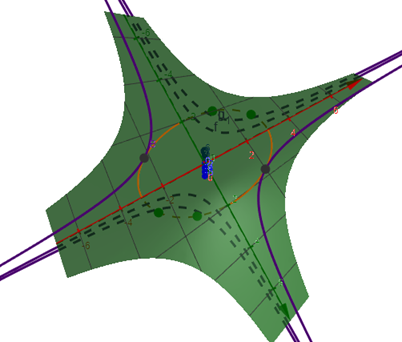2. Take a moment to understand the Lagrange multipliers method for finding min/max on a surface f(x, y, z) subject to a constraint g(x,y, z) = 0. Geometrically speaking, what does it mean for Vf = AVg? Why are the candidates for minimums & maximums exactly the points that satisfy this equation? %3D
2. Take a moment to understand the Lagrange multipliers method for finding min/max on a surface f(x, y, z) subject to a constraint g(x,y, z) = 0. Geometrically speaking, what does it mean for Vf = AVg? Why are the candidates for minimums & maximums exactly the points that satisfy this equation? %3D
Advanced Engineering Mathematics
10th Edition
ISBN:9780470458365
Author:Erwin Kreyszig
Publisher:Erwin Kreyszig
Chapter2: Second-order Linear Odes
Section: Chapter Questions
Problem 1RQ
Related questions
Question

Transcribed Image Text:Certainly! Here is the transcription of the image text suitable for an educational website:
---
12. Take a moment to understand the Lagrange multipliers method for finding min/max on a surface \( f(x, y, z) \) subject to a constraint \( g(x, y, z) = 0 \). Geometrically speaking, what does it mean for \( \nabla f = \lambda \nabla g \)? Why are the candidates for minimums & maximums exactly the points that satisfy this equation?
---
The text invites readers to explore how the method of Lagrange multipliers helps in identifying extrema (minimums and maximums) of a function with a constraint. It poses a geometric interpretation question about the condition \( \nabla f = \lambda \nabla g \), where the gradients of the functions \( f \) and \( g \) are scalar multiples of each other, indicating potential points of extrema that lie on the constrained surface.
Expert Solution
Step 1
Suppose we want to find the maximum of a function subject to a constraint .
To see how Lagrange multipliers work, look at the following graph:

Figure 1
The graph shows the function f from above along with constraint g = c and some level curves of f. The constraint is nothing but a plane that cuts through the function f.
The constraint g is an ellipse on xy-plane projected on to the surface f. The goal here is to find the maximum value of f without moving outside the elliptic boundary.
Step by step
Solved in 2 steps with 2 images

Recommended textbooks for you

Advanced Engineering Mathematics
Advanced Math
ISBN:
9780470458365
Author:
Erwin Kreyszig
Publisher:
Wiley, John & Sons, Incorporated

Numerical Methods for Engineers
Advanced Math
ISBN:
9780073397924
Author:
Steven C. Chapra Dr., Raymond P. Canale
Publisher:
McGraw-Hill Education

Introductory Mathematics for Engineering Applicat…
Advanced Math
ISBN:
9781118141809
Author:
Nathan Klingbeil
Publisher:
WILEY

Advanced Engineering Mathematics
Advanced Math
ISBN:
9780470458365
Author:
Erwin Kreyszig
Publisher:
Wiley, John & Sons, Incorporated

Numerical Methods for Engineers
Advanced Math
ISBN:
9780073397924
Author:
Steven C. Chapra Dr., Raymond P. Canale
Publisher:
McGraw-Hill Education

Introductory Mathematics for Engineering Applicat…
Advanced Math
ISBN:
9781118141809
Author:
Nathan Klingbeil
Publisher:
WILEY

Mathematics For Machine Technology
Advanced Math
ISBN:
9781337798310
Author:
Peterson, John.
Publisher:
Cengage Learning,

